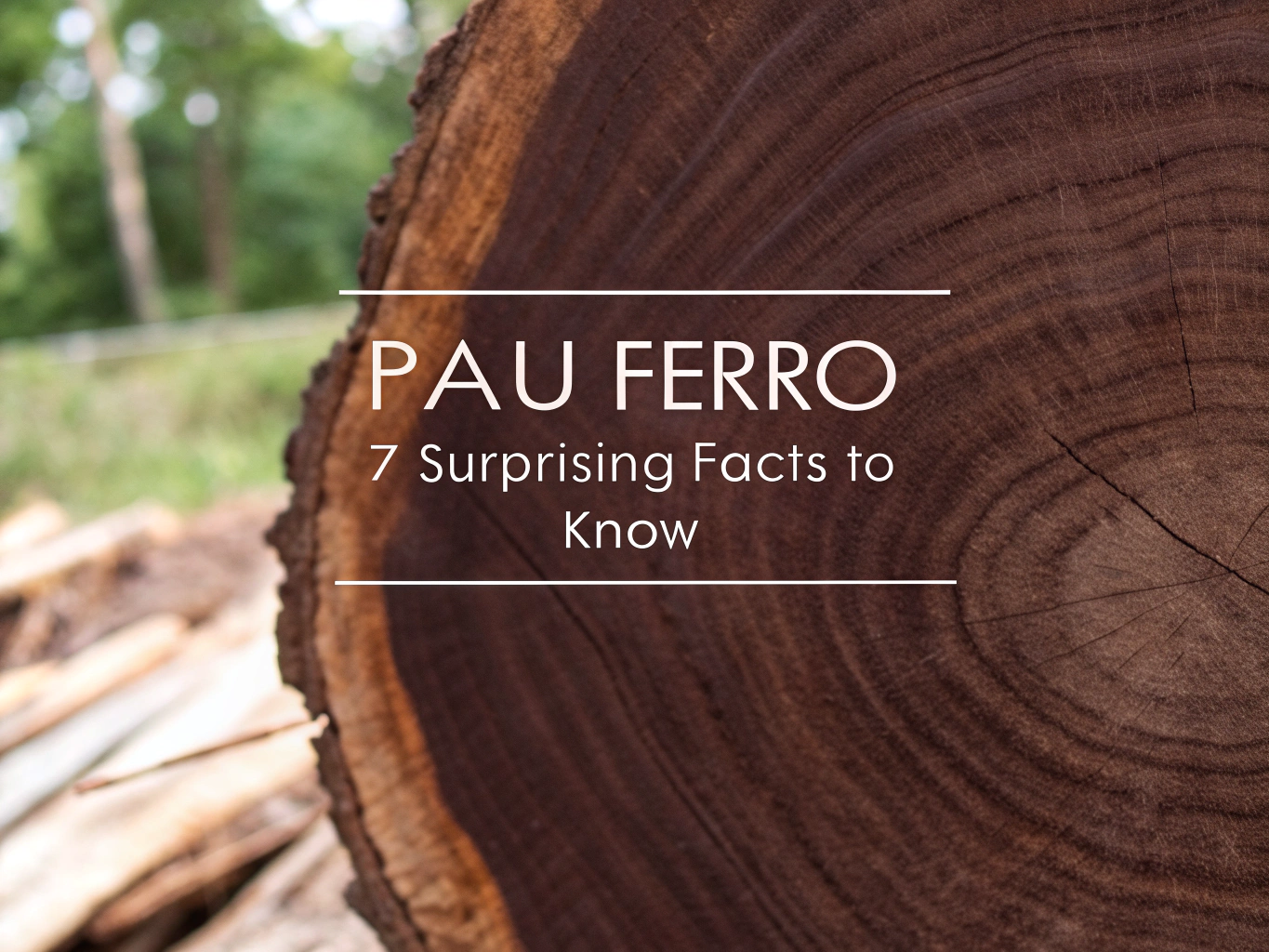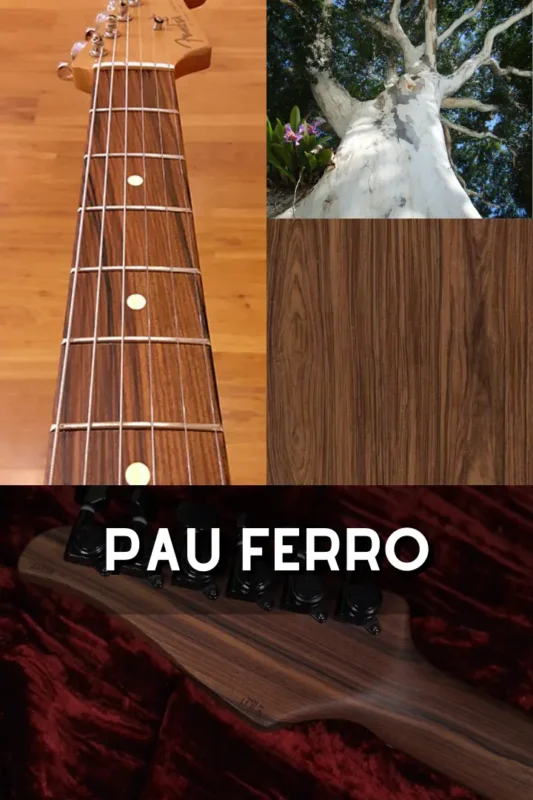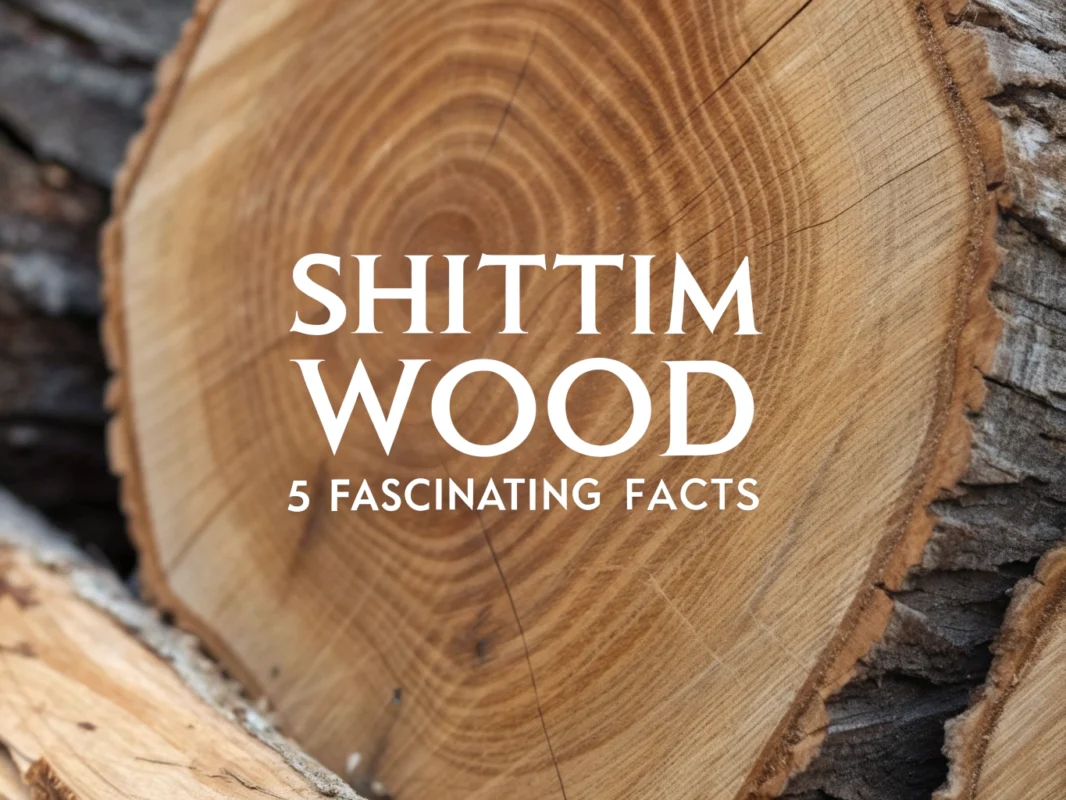
Pau Ferro: 7 Surprising Facts to Know

Did you know that Pau Ferro isn’t related to rosewood, despite sharing some common names? This fascinating wood, native to South America, offers a world of unique qualities and surprising facts. Explore its stunning color variations, strong physical properties, and why it’s becoming a favorite for guitar fretboards. Whether you’re a wood enthusiast or just curious, Pau Ferro has something intriguing to offer.
Table of Contents
Pau ferro represents one of the most misunderstood yet valuable woods in modern lutherie and fine woodworking, often confused with true rosewood despite belonging to an entirely different botanical family. This South American timber has gained significant popularity as a sustainable alternative to endangered rosewood species, offering unique tonal qualities and striking visual characteristics that make each piece distinctly beautiful.
Pau Ferro Isn’t Actually Related to Rosewood Despite Its Common Names
The True Botanical Identity
The commercial name “pau ferro” creates considerable confusion in the woodworking community. Pau ferro wood primarily refers to Machaerium scleroxylon, commonly called Morado, Bolivian Rosewood, or Santos Rosewood. The Wood Database confirms this species originates from South America, particularly Brazil and Bolivia.
Another species often labeled as Brazilian pau tree is Libidibia ferrea, formerly known as Caesalpinia ferrea. This tree goes by Brazilian Ironwood or Leopard Tree. Despite trade names suggesting otherwise, neither species belongs to the true rosewood family *Dalbergia*. The “rosewood” designations refer to appearance similarities rather than botanical relationships.

Its Dramatic Color Variations Make Every Piece Unique
Spectacular Visual Characteristics
Pau ferro’s visual appeal stems from its extraordinary color palette. The heartwood displays hues ranging from reddish-orange to dark violet-brown, typically accented by pronounced black streaks throughout. The sapwood contrasts sharply with pale yellow coloration, creating dramatic visual interest.
The grain pattern runs straight to interlocked, featuring a fine, even texture with natural high luster. What makes pau ferro particularly striking is its stratified appearance – single boards often showcase multiple colors including purple, orange, brown, and tan with distinctive black highlights. This variation means no two pieces look identical.
Pau Ferro Delivers Exceptional Strength and Durability
Impressive Physical Properties
The physical characteristics of pau ferro make it highly desirable for demanding applications. According to Rare Woods USA, the Janka hardness ranges from 1960 to 2940 lbf depending on the specific variant. The average density reaches approximately 55 lbs/ft³ (995 kg/m³).
- Rot resistance: Rated as very durable
- Workability: Machines well but dulls tools quickly
- Finishing: Takes finish to a high sheen
- Texture: Fine and even, perfect for detailed work
- Stability: Less prone to movement than many alternatives
It’s Becoming the Go-To Alternative for Guitar Fretboards
Superior Tonal and Practical Qualities
The pau ferro fretboard has revolutionized modern guitar construction. Music Gallery Inc describes its tonal character as warmer than ebony wood yet brighter than traditional rosewood. This unique sonic signature provides clarity, percussive attack, and pronounced high-end sparkle.
Major manufacturers like Fender have adopted pau ferro as their preferred fretboard material. The wood requires less humidity management than Brazilian rosewood and shows greater resistance to cracking. Its Janka hardness places it perfectly between maple and Indian rosewood, offering balanced performance for both electric and acoustic instruments.

Timeless Pau de Ferro
- Durable and strong material
- Ideal for musical instruments
- Attractive grain patterns
- Long-lasting performance
- Eco-friendly choice.

Pau Ferro Elegance
- Beautiful tonal qualities
- Favored for guitarmaking
- Strong and reliable wood
- Naturally resistant to wear
- Enhances instrument durability.

Authentic Pau Ferro
- Ideal for high-end projects
- Stunning grain and coloring
- Durable and lasting quality
- Eco-conscious material choice
- Versatile in crafting uses.
Pau Ferro vs Rosewood: Key Differences That Matter
Comprehensive Comparison
Understanding the differences between pau ferro vs rosewood helps woodworkers make informed material choices. The most significant distinction lies in their botanical origins – pau ferro belongs to Machaerium while true rosewoods come from Dalbergia species.
| Feature | Pau Ferro | Rosewood |
|---|---|---|
| Botanical Family | *Machaerium scleroxylon* | *Dalbergia* species |
| CITES Status | Not regulated | Brazilian Rosewood restricted |
| Color Variation | High per-board variation | More consistent appearance |
| Density | 995 kg/m³ | 800-870 kg/m³ (Indian) |
| Sustainability | Eco-friendly, unrestricted | Some species endangered |
Regulatory differences make pau ferro particularly attractive for international commerce. Unlike Brazilian rosewood, pau ferro faces no CITES restrictions, allowing unrestricted shipping and trade. This regulatory freedom, combined with its superior physical properties, makes it an increasingly popular choice for sustainable woodworking projects.
It’s One of the Most Sustainable Exotic Wood Choices
Environmental Advantages
Commercial Forest Products emphasizes pau ferro’s environmental credentials. The species doesn’t appear on CITES Appendices or the IUCN Red List of Threatened Species. This status makes it one of the most responsible choices for exotic wood applications.
The wood’s renewable sourcing potential and unrestricted international shipping status provide significant advantages over endangered alternatives like cocobolo or African blackwood. Manufacturers increasingly choose pau ferro to meet environmental compliance requirements while maintaining premium quality standards.
Pau Ferro Requires Safety Precautions Due to Allergenic Properties
Health Considerations and Broader Applications
Working with pau ferro requires proper safety measures. The wood contains R-3,4-dimethoxydalbergione, a potent sensitizer that can cause eye and skin irritation. Woodworkers report a relatively high reaction rate, making dust protection and skin coverage necessary during machining.
Beyond musical instruments, pau ferro finds applications in high-end furniture, cabinetry, flooring, and luxury products. The wood’s dramatic appearance and reliability make it suitable for decorative turnings and specialty millwork. Trade names include Morado, Ironheart, Pau Rosa, and Snake Bean, reflecting its diverse commercial applications.

O Pau de Ferro: 2nd Edition
- Explore historical insights
- Rich in cultural heritage
- Engaging storytelling
- Perfect for enthusiasts
- A collector's must-have.
FAQs
What Are The Characteristics Of Pau Ferro Wood?
Pau Ferro is known for its beautiful grain patterns and rich color variations ranging from golden browns to deep reds. It is a dense and durable wood, making it resistant to wear and tear. Pau Ferro is also noted for its fine texture, which makes it a popular choice in fine woodworking and instrument manufacturing.
Is Pau Ferro A Good Choice For Guitar Fretboards?
Yes, Pau Ferro is an excellent choice for guitar fretboards. It offers a smooth feel, high durability, and superb tonal qualities similar to rosewood. Many guitarists appreciate its aesthetic appeal and the clarity it can add to the instrument’s sound.
How Does Pau Ferro Compare To Rosewood?
Pau Ferro and rosewood are often compared due to their similar appearance and properties. Pau Ferro is generally harder and denser than rosewood, offering brighter tone qualities. It is also less oily, which can be beneficial for fretboards as it provides a fast playing surface.
What Is The Best Way To Care For Pau Ferro Furniture?
To care for Pau Ferro furniture, dust it regularly using a soft cloth, and occasionally clean it with a damp cloth. Avoid using harsh chemical cleaners. It’s also recommended to apply a quality furniture oil every few months to maintain its luster and prevent drying out.
Does Pau Ferro Wood Have Any Significant Allergies Or Irritations Associated With It?
While Pau Ferro is generally safe, some individuals may experience mild skin irritation or respiratory issues when exposed to its dust during woodworking. It is advisable to use proper protective gear, such as masks and gloves, when working with the wood to minimize such risks.












